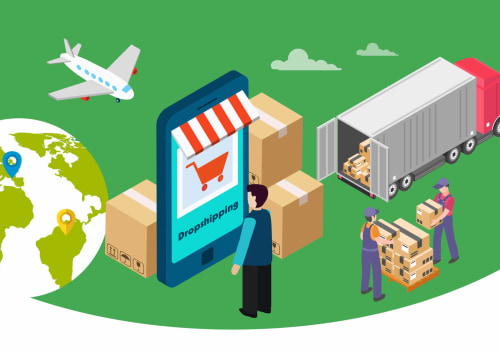Mobile app development is an ever-evolving industry, and the need for native mobile applications is on the rise. With more users accessing online services through their mobile devices, businesses and developers are turning to native app development to ensure a seamless user experience. But what does it take to develop a native mobile app? From understanding the basics of native app development to the latest trends and technologies, this article will provide you with all the information you need to know about native mobile app development. Native mobile app development is the process of creating apps specifically designed for a given platform, such as Android or iOS. This approach to app development offers a number of advantages and disadvantages, and it’s important to understand both in order to make an informed decision about whether this approach is right for you.
Native mobile app development involves using the language and tools available on the platform to build an app. For example, for Android apps, developers will typically use Java or Kotlin to build the code and the Android SDK for compiling and debugging. For iOS apps, developers use Objective-C or Swift and the iOS SDK.
Advantages of Native Mobile App Development
The main advantage of native mobile app development is that it offers improved performance and a better user experience compared to other development methods.Since the app is built using the native language of the platform, it has access to all of the underlying platform features and can take advantage of the device’s hardware capabilities. This can lead to better performance than with other development approaches. It also means that users will have a more consistent experience since the app will behave in the same way as other native apps on the device. Another advantage of native mobile app development is that it is often easier to maintain.
Since the code is written using the platform’s language, it can be easily updated and maintained without having to rewrite large amounts of code.
Disadvantages of Native Mobile App Development
The main disadvantage of native mobile app development is the cost and time required to develop for multiple platforms. Building an app for Android requires different skills and tools than building one for iOS, so if you want your app to be available on both platforms you will need to double your efforts. Additionally, since the code for each platform is written separately, you will need to maintain two separate codebases which can be time consuming and costly.Examples of Successful Native AppsThere are many successful apps that have been built using native mobile app development. Some examples include Instagram, Snapchat, and Uber. All of these apps are built using native development approaches and have been hugely successful.
The Process for Developing a Native Mobile App
The process for developing a native mobile app typically involves several steps, including design, coding, testing, and deployment.The first step is design where you decide what features your app should include and how they should look and feel. Once you have a design in place, you can begin coding your app using the language and tools available on the platform. Once you have finished coding your app, it needs to be tested for bugs before being deployed to an app store or marketplace.
Tools & Technologies for Developing Native Apps
There are many different tools and technologies available for developing native apps.For Android apps, developers typically use Java or Kotlin as well as the Android SDK for compiling and debugging. Additionally, there are many other tools available that can help speed up development such as cross-platform frameworks like React Native or Flutter.
Best Practices for Designing & Developing a Native Mobile App
When designing and developing a native mobile app, it’s important to keep best practices in mind in order to ensure a successful end product. Some best practices include using native UI components whenever possible, using platform-specific APIs when necessary, making sure your code is well-structured and easy to read, keeping your code DRY (don’t repeat yourself), and testing your app thoroughly before releasing it.The Process of Developing a Native Mobile App
Creating a native mobile app involves a number of steps that are designed to ensure that the app is properly designed, coded, tested, and deployed.The process begins with designing the app's layout and features. This involves deciding on the user interface, the colors and fonts that will be used, and which features will be included. After the design is finalized, the coding process can begin. This involves writing code to ensure that the app functions properly and meets the design specifications.
After the coding is complete, it's important to thoroughly test the app for bugs and other issues. This includes testing on various devices and platforms to ensure that the app works as expected. Once all of these steps have been completed, the app can be deployed for use. It's important to remember that creating a native mobile app requires a great deal of time and effort. It can be a lengthy process, and it's important to ensure that all steps are completed properly in order to create a successful app.
Additionally, it's important to keep in mind that native apps are often more expensive than other types of apps due to the complexity of the development process.
The Disadvantages of Native Mobile App Development
Native mobile app development has its drawbacks, and it’s important to be aware of them before deciding whether this approach is right for you. The most significant disadvantage of native mobile app development is the cost and time associated with developing for multiple platforms. It typically takes more time and money to develop a native app for both Android and iOS, and if you want to target other mobile operating systems, such as Windows Phone, you’ll need to invest even more resources. Additionally, the cost of testing an app on multiple platforms can be significant, since it requires verifying the app works properly on each device. Another disadvantage of native mobile app development is that it requires specialized skills.In order to develop an app that runs properly on a particular platform, you’ll need to be familiar with the platform’s development environment and coding language. For example, iOS apps are typically written in Objective-C or Swift, while Android apps require knowledge of Java. Not only does this require hiring developers who are familiar with the platform’s language, but it also means that making changes to the app can be more difficult if you have to port code from one language to another.
The Advantages of Native Mobile App Development
Native mobile app development offers many advantages compared to other approaches. For starters, native apps are specifically designed and optimized for the platform they are built on.This means that the performance and user experience are superior compared to other approaches. Native apps are also more secure because they use the platform's security features. Additionally, native apps can take advantage of device features such as the camera, microphone, and GPS. All of these features provide an enhanced user experience and make it easier for users to interact with the app. Another advantage of native mobile app development is its ease of use.
Platforms like Android and iOS have well-documented APIs that make it easy for developers to integrate their apps into existing systems. Additionally, native apps are often more reliable than other approaches since they are designed to work on a specific platform. Finally, native mobile app development offers the ability to customize the app experience. Developers have access to a wide range of tools and libraries that they can use to create an app with a unique look and feel. This is an important benefit for businesses that want to stand out from the competition.
Tools and Technologies for Developing Native Apps
Tools and Technologies for Developing Native AppsNative mobile app development is not a one-size-fits-all approach.Different platforms have their own set of tools and technologies that are used for development. Android apps are typically written in Java or Kotlin, while iOS apps are usually written in Objective-C or Swift. Native mobile app development also requires knowledge of platform-specific APIs and frameworks, such as Apple’s UIKit framework for iOS and Google’s Material Design for Android. In addition to platform-specific programming languages, there are also frameworks available that allow developers to create apps across multiple platforms with a single codebase.
Popular cross-platform frameworks include React Native, Flutter, Xamarin, and Ionic. These frameworks allow developers to leverage existing knowledge and take advantage of the features of both native and web-based development. Finally, developers will need access to a range of tools to help them build their apps. These tools include integrated development environments (IDEs), version control systems, build automation tools, libraries, and more. Popular IDEs for Android include Android Studio and IntelliJ IDEA, while Xcode is the primary IDE for iOS development.
Examples of Successful Native Apps
Native app development is becoming increasingly popular, due to the advantages it offers over other development approaches.To better understand the potential of native apps, let's look at some examples of successful native apps.
Netflix
Netflix is another example of a successful native app. It was developed using both iOS and Android platforms, and it has become one of the most popular streaming services in the world.Netflix offers users a large library of movies and TV shows, along with access to its original content. The app has a clean and intuitive user interface, making it easy for users to find what they're looking for.
Uber
Uber is an example of a successful native app that uses both iOS and Android platforms. The app allows users to request rides from drivers in their area, and it has become one of the most popular ride-hailing services in the world. Uber's app has a simple design, making it easy for users to request rides, track their drivers, and pay for their trips.Amazon
Amazon is another example of a successful native app.The app was built using both iOS and Android platforms, and it offers users access to Amazon's vast selection of products. The app also provides users with a wealth of features, including personalized recommendations, order tracking, and more.
Google Maps
Google Maps is one of the most successful native apps ever created. The app was developed using both iOS and Android platforms, and it provides users with detailed maps and directions to any destination they enter. It also allows users to save their favorite locations and share their current location with others.Best Practices for Designing and Developing a Native Mobile App
Designing a Native Mobile AppWhen designing a native mobile app, it’s important to keep the user experience in mind.Consider the target audience and their needs, as well as the devices they are likely to use. Make sure the app is easy to use and navigate. Consider how the app will look on different screen sizes and orientations. It is also important to ensure that the app is responsive and efficient.
Make sure it loads quickly, runs smoothly, and doesn’t crash. Use high-quality images and graphics that don’t slow down performance. Ensure that the app is secure and compliant with any applicable laws or regulations. Consider using encryption or other security measures to protect user data.
Developing a Native Mobile AppWhen developing a native mobile app, it’s important to use the right tools and technologies. Different platforms have different requirements, so make sure you are familiar with the specific technologies required for the platform you are developing for. Make sure you are using the latest version of the platform’s software development kit (SDK). This will ensure that your app is compatible with the latest version of the platform, as well as any future updates.
It is also important to test your app thoroughly throughout the development process. Test the app on multiple devices and platforms to make sure it works correctly. Make sure all features and functions are working as expected before releasing your app. Finally, make sure your app is optimized for performance and battery life.
This will ensure that users get the best experience possible when using your app. Native mobile app development is a great way to create apps specifically tailored for a given platform. It offers users an improved experience and the ability to take advantage of the platform's features, such as its hardware and software. However, it's important to understand both the advantages and disadvantages of native mobile app development in order to make an informed decision about whether it is the right approach for you. This article has discussed the advantages and disadvantages of native app development, successful examples, the process of developing a native mobile app, tools and technologies for developing native apps, and best practices for designing and developing a native mobile app.
Understanding both the advantages and disadvantages of this approach is essential when considering native mobile app development.







